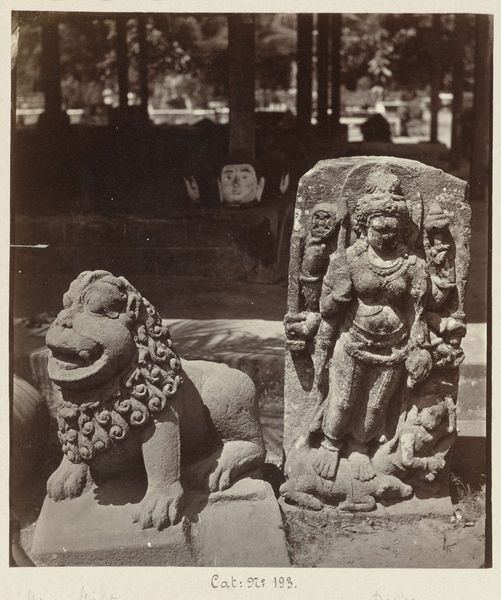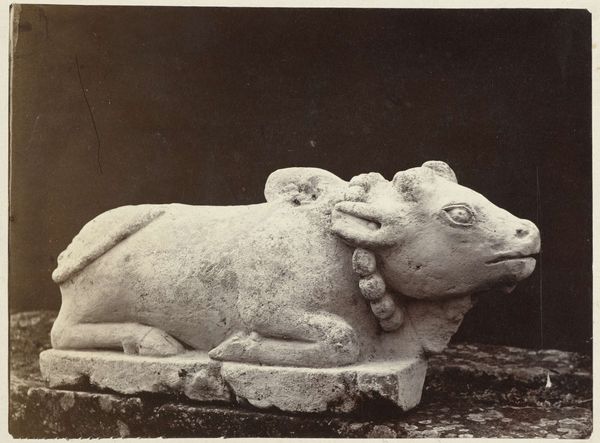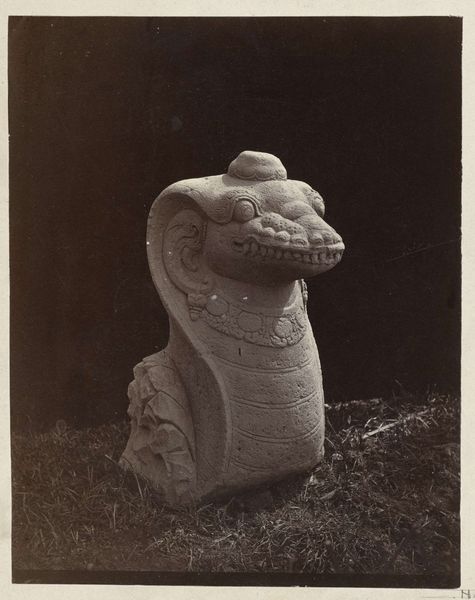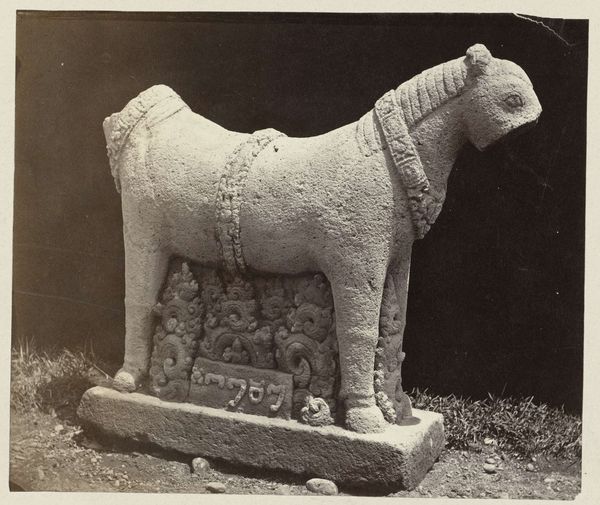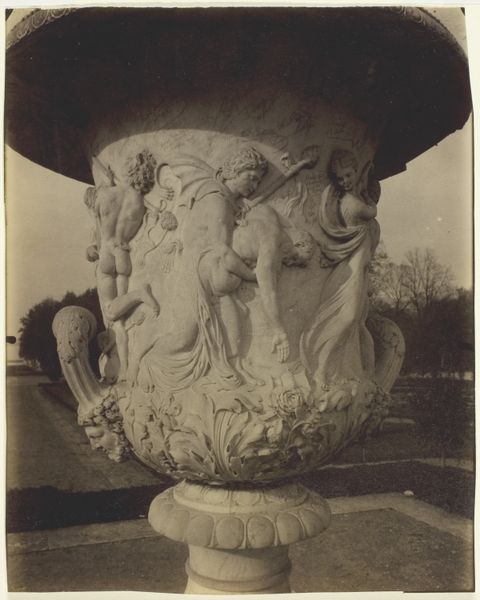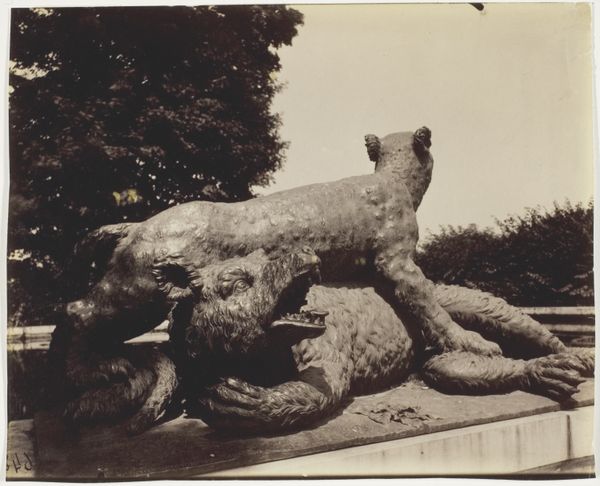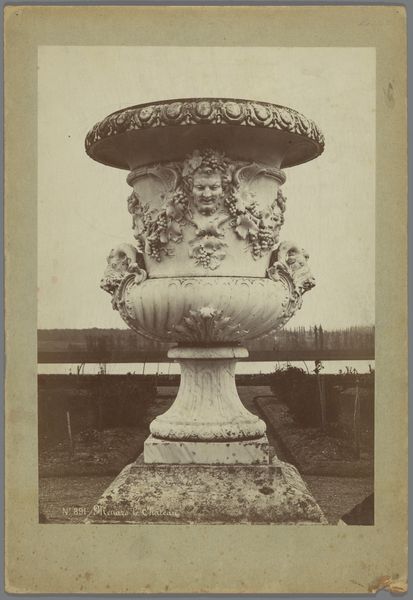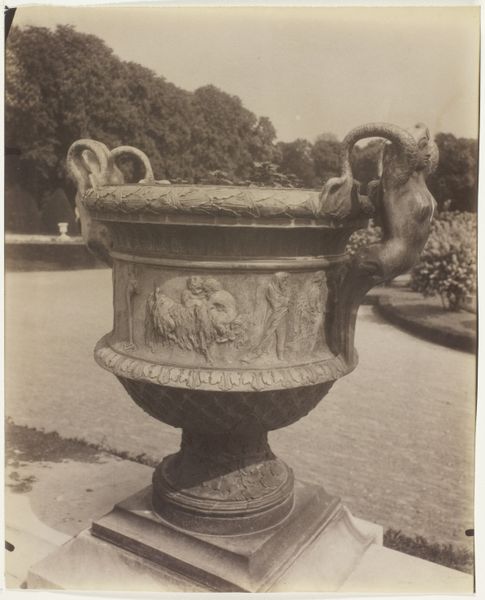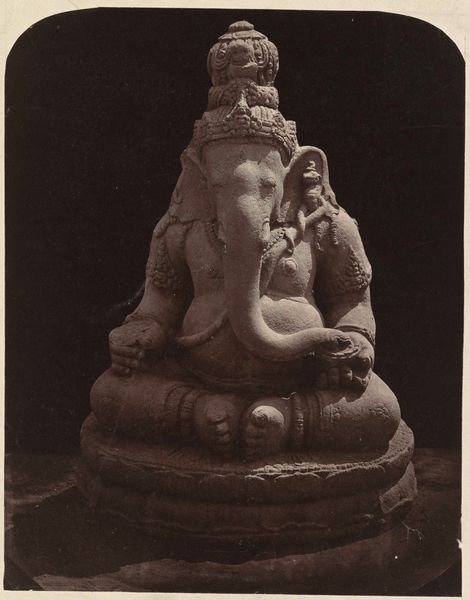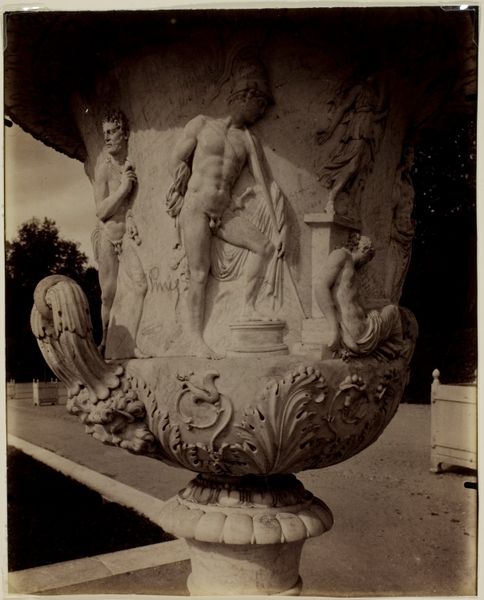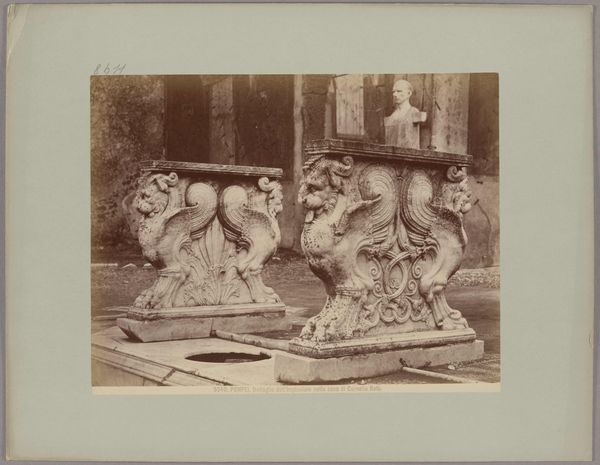
Terra cotta elephant with depository Karta Wangingan, Kunigan district, West-Java province, period unknown. Possibly 1863 - 1864
0:00
0:00
photography, sculpture, gelatin-silver-print, terracotta
#
still-life-photography
#
asian-art
#
landscape
#
photography
#
historical photography
#
sculpture
#
gelatin-silver-print
#
19th century
#
terracotta
Dimensions: height 210 mm, width 170 mm
Copyright: Rijks Museum: Open Domain
Curator: This photograph, a gelatin-silver print, captures a terra cotta elephant sculpture in West Java. It’s believed to be from around 1863-1864, documented by Isidore Kinsbergen. Editor: The mood is quite somber, isn't it? The low contrast and aged print lend a gravitas, almost as if documenting a ruin. Curator: It’s more than a ruin, though. Look at the careful articulation of form; the tusks, the patterned saddle. There's a deliberate arrangement of textures at play—smooth terracotta against rough bark and foliage. Editor: Precisely. I find myself drawn to the cultural context. This object signifies power and perhaps even religious importance. Note the “depository Karta Wangingan” in the title – pointing towards potential ceremonial functions within the Kuningan district's history. Curator: Semiotically, the elephant form represents wisdom and royalty, certainly. And technically, the lighting guides our eye along the carefully constructed narrative - shadow creating depth. Editor: But considering colonialism, we need also examine what it means for Kinsbergen, a presumed Westerner, to be photographing this object. Who commissioned this? What purpose did such documentation serve within the framework of colonial power? Curator: An important point. Although Kinsbergen presents a seemingly objective record, inherent biases were at play when he framed the composition within parameters influenced by nineteenth-century Western conventions of landscape and ethnography. Editor: The gaze, after all, is never neutral. To truly comprehend, we must unravel the story not only of the elephant, but the hands that sought to preserve its image—for whom, and why. It makes you reflect on representation and how easily narratives can become shaped by dominant forces. Curator: Ultimately, Kinsbergen has created more than just documentation. We see an artifact, undeniably, but one captured in an aesthetic choice and presented for audiences across time – something more like a formal meditation on artifice and organic context. Editor: A necessary conversation indeed; seeing history isn't passive—it demands critical interrogation from multiple perspectives to appreciate what still holds profound relevance.
Comments
No comments
Be the first to comment and join the conversation on the ultimate creative platform.

